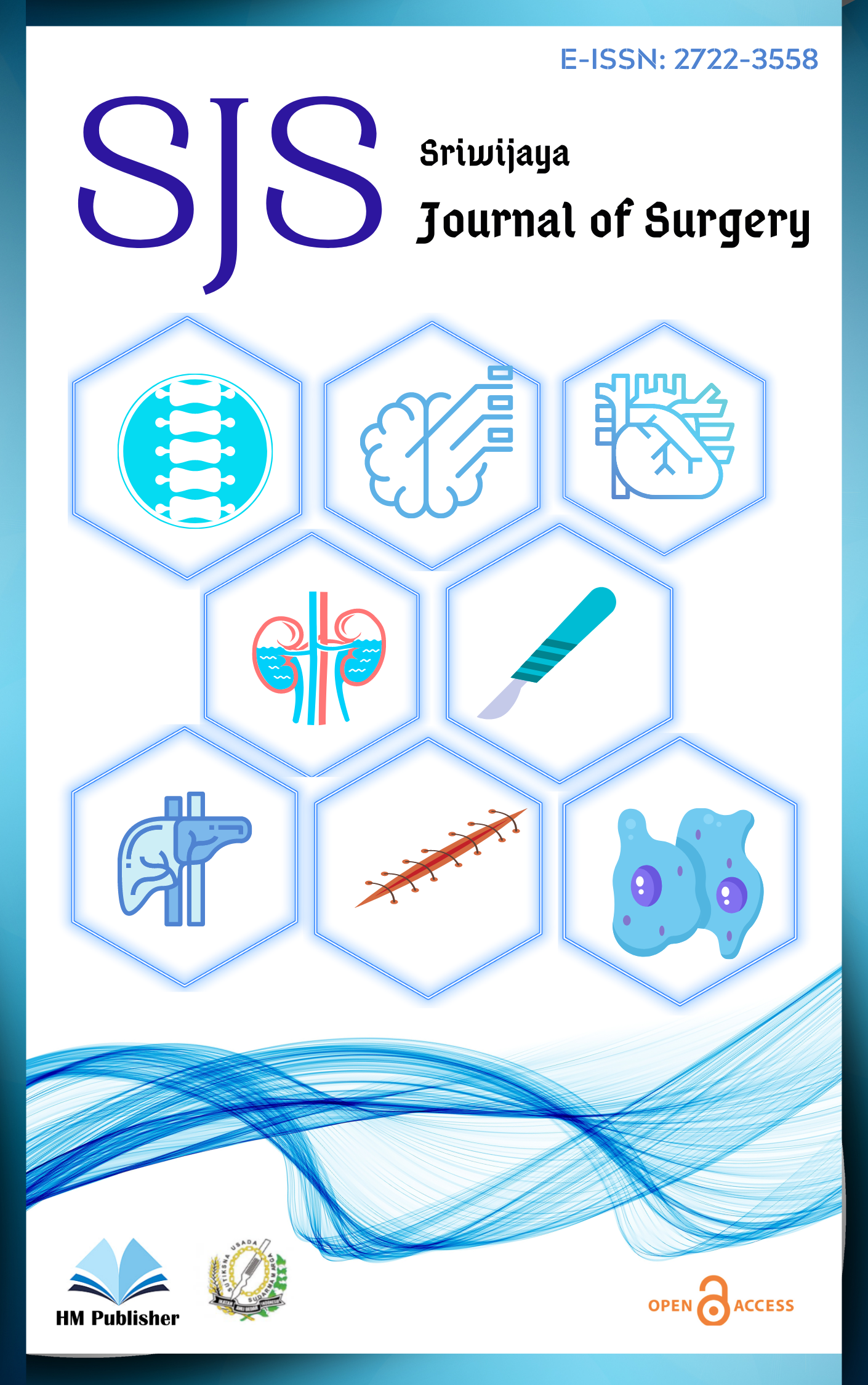Main Article Content
Abstract
Introduction: Thoracotomy represents a significant physiological challenge with considerable mortality risk. Early, objective risk stratification in the General Intensive Care Unit (GICU) is essential for guiding clinical management. This study sought to evaluate the utility of the Acute Physiology and Chronic Health Evaluation II (APACHE II) score as a prognostic tool in a heterogeneous post-thoracotomy population at a tertiary referral center in Southeast Asia.
Methods: A retrospective cohort study was conducted on 33 consecutive patients admitted to the GICU following thoracotomy between January and December 2024. The APACHE II score was calculated using the most deranged physiological values within the first 24 hours of admission. The primary outcome was in-hospital mortality. Statistical analyses included non-parametric tests for group comparisons, Spearman's rank correlation, and Receiver Operating Characteristic (ROC) curve analysis. A novel aspect of this study was the post-hoc stratification of the cohort by the primary surgical indication (malignancy versus non-malignancy) to explore sources of prognostic variability.
Results: The overall mortality rate was 27.3% (9 of 33 patients). Non-survivors had a significantly higher median APACHE II score than survivors (23 vs. 8; p < 0.001). A strong, positive correlation was observed between the APACHE II score and mortality (Spearman's ρ = 0.706; p < 0.001). ROC analysis demonstrated excellent discriminatory performance for the overall cohort, with an Area Under the Curve (AUC) of 0.956 (95% CI: 0.891–1.000). A score of ≥12.5 was identified as the optimal cut-off, yielding a sensitivity of 88.9% and specificity of 87.5%. Analysis of the APACHE II components revealed that mortality was primarily driven by derangements in neurological (GCS), renal (Creatinine), and acid-base (pH) parameters.
Conclusion: In this preliminary, single-center analysis, the initial 24-hour APACHE II score demonstrated potential as a powerful prognostic marker for in-hospital mortality following thoracotomy. A candidate cut-off score of ≥12.5 successfully identified a high-risk subgroup. However, given the study's significant limitations, including a small and heterogeneous sample, these findings should be interpreted as hypothesis-generating. They underscore the need for larger, prospective studies to validate this cut-off and to develop more refined prognostic models for specific subgroups of post-thoracotomy patients.
Keywords
Article Details
1. Authors retain copyright and grant the journal right of first publication with the work simultaneously licensed under a Creative Commons Attribution License that allows others to share the work with an acknowledgement of the work's authorship and initial publication in this journal.
2.Authors are able to enter into separate, additional contractual arrangements for the non-exclusive distribution of the journal's published version of the work (e.g., post it to an institutional repository or publish it in a book), with an acknowledgement of its initial publication in this journal.
3.Authors are permitted and encouraged to post their work online (e.g., in institutional repositories or on their website) prior to and during the submission process, as it can lead to productive exchanges, as well as earlier and greater citation of published work.

